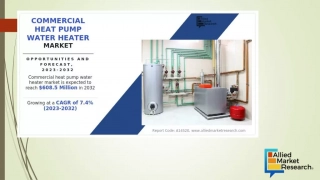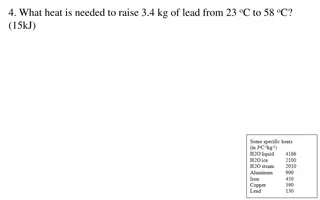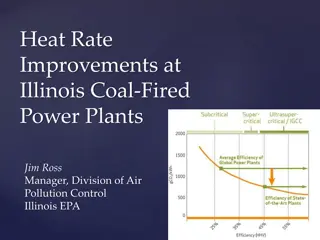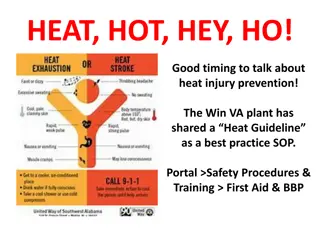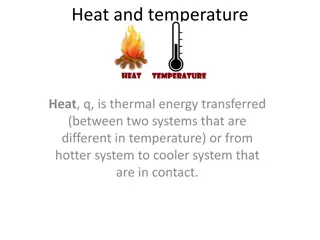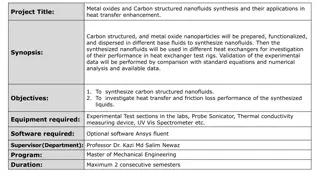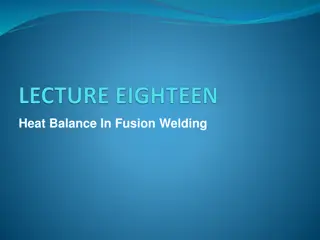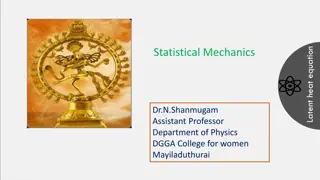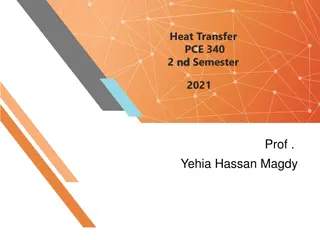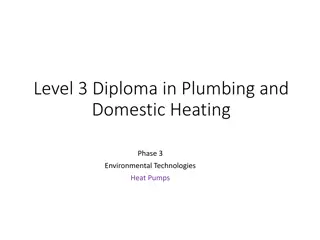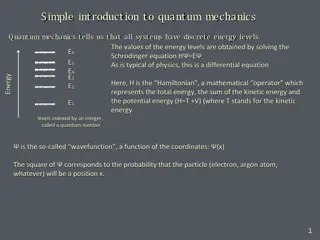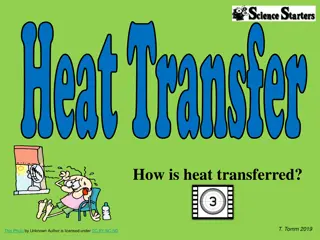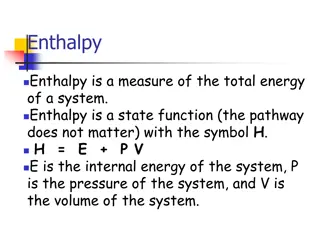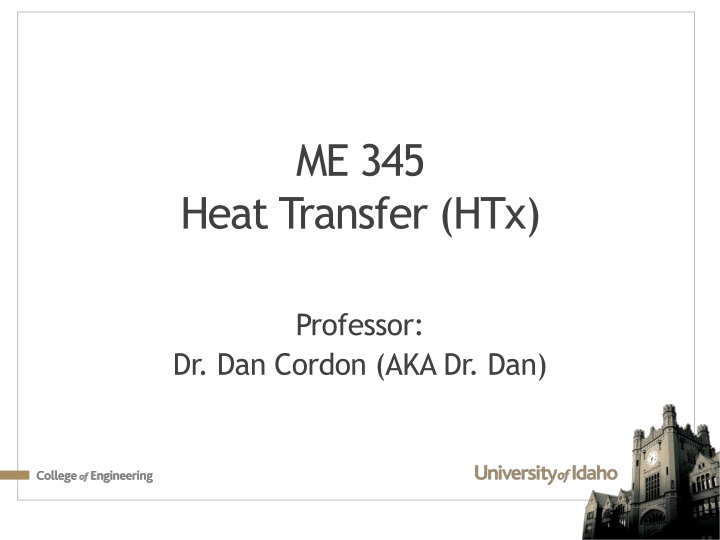
Heat Transfer Equations and Thermal Conductivity
Explore the fundamentals of heat transfer equations and thermal conductivity in this educational guide. Learn about the heat equation, solving for steady-state conditions, and thermal resistance models. Discover insights on temperature distribution, heat flux, and the implications for insulation in homes and coolers.
Download Presentation

Please find below an Image/Link to download the presentation.
The content on the website is provided AS IS for your information and personal use only. It may not be sold, licensed, or shared on other websites without obtaining consent from the author. If you encounter any issues during the download, it is possible that the publisher has removed the file from their server.
You are allowed to download the files provided on this website for personal or commercial use, subject to the condition that they are used lawfully. All files are the property of their respective owners.
The content on the website is provided AS IS for your information and personal use only. It may not be sold, licensed, or shared on other websites without obtaining consent from the author.
E N D
Presentation Transcript
ME 345 Heat Transfer (HTx) Professor: Dr. Dan Cordon (AKA Dr. Dan)
THE HEAT EQUATION The Heat Equation: Conservation of energy applied to a differential volume
SOLVING THE HEAT EQUATION We are going to start solving the most simple case of the Heat Equation: 1D Steady-State. Even though this is simple, all of Chapter 3 is dedicated to this topic. The Heat Equation (with constant thermal conductivity) looks like: ?2? ??2= 0 ? ?? ?? ?? or = 0 This is a 2nd order differential equation, which will require information about two BCs to solve
THE PLANE WALL 1D SS heat transfer in cartesian coordinates. No internal heat generation. Looking only at temperature distribution within the wall. BCs: @ x=0, T(0) = Ts,1 @ x=L, T(L) = Ts,2
SOLUTON: PLANE WALL SS HEAT EQUATION ? ?? ?? ?? = 0 Integrate once to get: ?? ?? = ?1 Integrate again to get: ? ? = ?1? + ?2 Apply first boundary condition @ x=0, T(0) = Ts,1 ? 0 = ?10 + ?2= ??,1 ?2= ??,1 Apply second boundary condition @ x=L, T(L) = Ts,2 ? ? = ?1? + ??,1= ??,2 ??,2 ??,1 ? ?1= ??,2 ??,1 ? So ? ? = ? + ??,1
OBSERVATIONS ? ? =??,2 ??,1 ? + ??,1 ? Temperature is linear with x Thermal conductivity (k) is not in the solution at all Why not?!!! What does this imply about insulation for a home? What does this imply about insulation for a cooler? The highest and lowest temperatures occur at the surfaces, not inside the wall
HEAT FLUX and HEAT RATE ? ? =??,2 ??,1 ? + ??,1 ? = ??? Fourier s Law says ?? Derivative of T(x) is ??,2 ??,1 ?? ? So the heat flux through the wall will be ?? = ? =? ???,2 ??,1 or ?? ???,1 ??,2 And the heat rate will be ??=?? ??,1 ??,2 ?
THERMAL RESISTANCE MODEL ??=?? ? What if we define thermal resistance for conduction as: ? ??= ??,1 ??,2 ??,1 ??,2 ??,????= ?? Remember that for a simple electric circuit Ohm s Law says that electrical resistance looks like: ? ??= Where is the volume resistivity ??,1 ??,2 ??????= ? This means we can model 1D SS problems as simple electrical circuits!!!
THERMAL RESISTANCE MODEL ? ??= ??,1 ??,2 ??,????= ?? Treat temperature like voltage (potential) Treat heat flow like current flow ??,???? ??,1 ??,2 ??
THERMAL RESISTANCE MODEL Similar to conduction, we can use Newton s Law of Cooling to define the thermal resistance for convection 1 ?= ??,1 ??,2 ??,????= ?
THERMAL RESISTANCE MODEL Can solve for heat rate knowing any two temperatures Using the total resistance
CONTACT RESISTANCE Between two solids (that are not molecularly bonded) there will be a contact resistance. We typically model this as another resistor in series
Example Problem 3.2 Assumptions: Analyze at steady-state (highest temperatures) 1D heat transfer Chip thermal resistance is low, and chip is thin (high thermal conductivity, so temperature throughout chip is uniform) Material properties remain constant even with temperature changes Radiation heat transfer is negligible Additional Information From Table A.1 at 350 K, aluminum has thermal conductivity of k = 239 W/m-K
Example Problem 3.2 Energy balance (flux) at the chip Substituting in values from thermal resistance model Still need to know something about the contact resistance R t,c From Table 3.2, a silicon chip with epoxy to aluminum has a range of 0.2-0.9 x 10-4 [m2K/W] Pick worst-case (high resistance) value
Example Problem 3.2 Solving above for Tc we get Substituting in values This is below the maximum allowable chip temperature, so it will be safe under these conditions
Example Problem 3.2 How bad would contact resistance have to be for chip to get over 85 C? Solving for R t,c it would have to be 50 x 10-4 which is much higher than any solid-solid value in Table 3.2 What if you wanted to run the chip at higher power? What if one side lost convection (treat as insulated)? Tc = 126 C or 125 C

